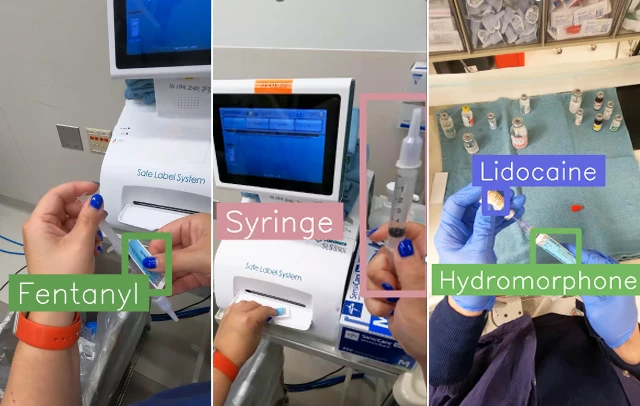It would be an understatement to say that things can get pretty hectic in a hospital emergency room … enough so that staff occasionally administer the wrong medication. Soon, however, AI-enabled wearable cameras could help keep that from happening.
Intravenous drugs are typically stored in vials until needed, at which point they're transferred to hypodermic needles. The syringes of those needles are in turn labelled, so that medical workers can keep track of which medications are in which hypodermics.
That said, in chaotic emergency rooms and busy operating rooms, mistakes do sometimes get made. For example, workers may draw medication from the right vial but mislabel the syringe, or they may correctly label the syringe but draw from the wrong vial.
Although barcode labels, color-coding systems and other measures do help reduce such errors, all of them may be skipped or missed by staff who are rushing and distracted.
Working with colleagues from Carnegie Mellon University, Makerere University (Uganda) and the Toyota Research Institute, scientists from the University of Washington recently set out to remedy the problem.
They started by having 13 anesthesiologists (or certified nurses) wear GoPro cameras on their heads as they performed routine drug draws over a period of 55 days. The resulting 4K footage captured a total of 418 draws performed at two hospitals in 17 operating rooms, under a variety of lighting conditions.
In all cases, the contents of the vial and the label information on the syringe were noted at the time the video was shot. The footage was then used to train a deep learning algorithm, that learned which visual characteristics corresponded to which drug vials and which syringe labels.
Because the wording on both was often obscured by hands or other obstacles, the algorithm instead learned to recognize the telltale size and shape of the specific vials and syringe types, along with the color of the vial caps and the print sizes of the syringe labels. It additionally had to learn to focus only on the vials and syringes that were currently being held in the person's hands.

After several months of training, the system was ultimately able to assess head-camera video in real time, first identifying the vial contents and then checking to see if the syringe label was a match. In tests performed so far, it has proven to be 99.6% accurate at confirming matches and 98.8% accurate at catching mismatches.
"The thought of being able to help patients in real time or to prevent a medication error before it happens is very powerful," says the University of Washington's Dr. Kelly Michaelsen, co-lead author of a paper on the study. "One can hope for a 100% performance but even humans cannot achieve that. In a survey of more than 100 anesthesia providers, the majority desired the system to be more than 95% accurate, which is a goal we achieved."
The paper was recently published in the journal npj Digital Medicine. You can see the system in action, in the video below.
Source: University of Washington




